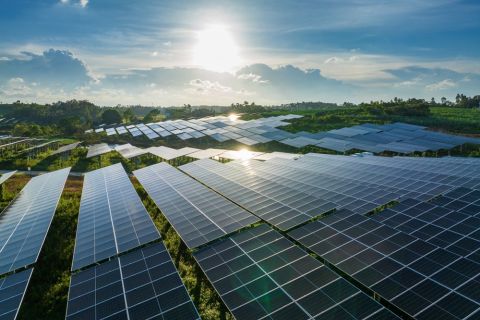The shale boom that continues to sweep across the U.S. could spill into Mexico, providing a much-needed boost to stagnant production. However, it is too early to tell which oil and gas companies will jump at the opportunity to develop Mexico’s shale resources as legislators are still considering laws governing the recently opened energy sector.
Bills that will make way for production-sharing and profit-sharing contracts as well as regulation establishing local content requirements, which could increase to at least 25% by 2025, among others were expected to be debated by Mexican legislators in June.
Finalized fiscal terms on which companies’ decisions hinge are forthcoming and could arrive sometime this summer. Mexico’s energy ministry has until Sept. 17 to make a decision on state-run Pemex’s entitlement request as part of Round Zero, the round in which areas are set aside for Pemex with the rest being made available to private investors, making it unlikely that the first bid round would come anytime soon. But some companies, including Chevron, have already signaled interest in forming partnerships in Mexico.
The potential appears great, considering the U.S. Energy Information Administration (EIA) estimates the country has the world’s sixth-largest amount of technically recoverable shale gas resources at 16 Tcm (545 Tcf).
“While the southern region of the country contains the largest share of proved reserves, the northern region has the potential to be the center of growth in future reserves as it contains almost 10 times as much probable and possible natural gas reserves,” the EIA said in its most recent report on Mexico. “The figure of technically recoverable shale gas resources is far smaller than the total resource base because of the geologic complexity and discontinuity of Mexico's onshore shale zone and other issues, including the availability of required technology and water resources.”
Speaking during the Mayer Brown Global Energy Conference in May, EIA administrator Adam Sieminski said there is more opportunity for gas development in Mexico, which has currently been importing much of its gas from the U.S. due to higher gas demand from its industrial and electric power sectors. Mexico’s energy ministry predicts U.S. pipeline exports to Mexico will more than double the 54 MMcm/d (1.8 Bcf/d) average in 2013, rising to 114 MMcm/d (3.8 Bcf/d) in 2018.
Successfully developing shale prospects could upend the estimates, prompting the EIA to alter its forecast. Geologically, the potential is there, Sieminski said, but it is impossible to know until more development occurs.
“I think the reform down there could lead to opportunities for Mexico to develop its own gas resources, maybe even joining the U.S. in becoming an exporter, which would be another remarkable event,” Sieminski said.
Basins believed to hold shale resources line the country’s northeastern and eastern parts. Basins include the Chihuahua, Sabinas, Burro-Picachos, Tampico-Misantla, Veracruz and the Burgos, which could be the most promising because of its proven resources and continuation of the prolific Eagle Ford Shale play across the border in Texas.
In an investor presentation, Pemex said the Woodford also has continuity across the border, and the Bakken and Haynesville shale plays are analogues of plays in Mexico. The Tampico-Misantla Basin possibly holds 34.8 Bboe in prospective unconventional resources, with the Burgos holding about 15 Bboe, Sabinas with 9.8 Bboe and the Veracruz with 0.6 Bboe in prospective unconventional resources.
“In a short time we can start developing the Eagle Ford just like in Texas,” said Jordy Herrera, former energy secretary for Mexico, before pointing out other shale prospects. “We have plenty of resources. Mexico realized this new industry for unconventionals only three years ago.”
In 2011, Pemex first produced shale gas from an exploratory well in northern Mexico and announced earlier this year plans to drill 10 shale test wells. That would bring Mexico’s total to 175, which pales in comparison to the more than 13,000 wells drilled in Texas, based on EIA data.
Pemex, however, lacks the technology and finances needed to successfully develop these resources, Herrera said. That could change because the reform allows Pemex to form joint ventures. The company’s 2013 annual report calls for getting specialized technology and additional investment for shale oil and gas prospecting as part of its plan to maintain reserve replacement of greater than 100%.
Unconventional resources such as shale and heavy oil have been categorized as high technical and low to medium geological risk, said Pemex’s acting E&P director Gustavo Hernández during a March conference call about Round Zero. During the call he explained the strategy behind Pemex’s request.
“We are requesting 31% [of prospective resources]. That accounts for 34.5 billion barrels,” said Hernández, who was recently named CEO of Pemex E&P. “There are still lots of opportunities for other players to come to explore and to convert these prospective resources—both conventional and unconventional—accounting for 78 billion barrels to be discovered.”
While operators and service providers have been relatively quiet about any plans, or lack thereof, to pursue shale prospects so early in the process, several seismic companies are already laying the groundwork for potential onshore developments.
Among these are ION Geophysical Corp. subsidiary GX Technology, which landed a multiyear contract with Pemex. As part of the contract, GXT will provide seismic data processing for onshore and offshore surveys during the next three years.
In addition, U.K.-based ffA signed a multiyear technical assistance agreement with the Instituto Mexicano del Petróleo for the use of its GeoTeric software and geological expression consulting services for the Sener-Conacyt Shale Gas/Oil project, which the company said will involve acquiring and processing 2,700 sq km (1,043 sq miles) of 3-D seismic data from the Limonaria and Galaxia areas. The data—which will include full-azimuth, high-density and multicomponent seismic data—will aid in studying the Eagle Ford and Pimienta shales in the Tampico-Misantla and Burgos basins, respectively, according to ffA.
Recommended Reading
J.P. Morgan, Capital One Commit $260MM to Arizona Solar Project
2024-10-15 - Arizona’s Box Canyon solar project secured a $260 million tax-equity financing commitment from Capital One and an affiliate of J.P. Morgan.
Dividends Declared (Sept. 30 - Oct. 11, 2024)
2024-10-11 - Here is a compilation of dividends and distributions declared from select upstream, midstream and service and supply companies from Sept. 30 to Oct. 11.
Post Oak Backs New Permian Team, But PE Faces Uphill Fundraising Battle
2024-10-11 - As private equity begins the process of recycling inventory, likely to be divested from large-scale mergers, executives acknowledged that raising funds has become increasingly difficult.
Mexico Pacific Working with Financial Advisers to Secure Saguaro LNG I FID
2024-10-23 - Mexico Pacific is working with MUFG, Santander and JP Morgan to arrange the financing needed to support FID and the anchor phase of Saguaro Energía LNG.
Exclusive: Why Family Offices Favor ‘Lower-Risk’ Oil, Gas Investments
2024-11-22 - Evan Smith, Stephens’ senior vice president for investment banking, describes growth in the company’s network of family offices, specifically those investing in the energy sector, in this Hart Energy Exclusive interview.
Comments
Add new comment
This conversation is moderated according to Hart Energy community rules. Please read the rules before joining the discussion. If you’re experiencing any technical problems, please contact our customer care team.





